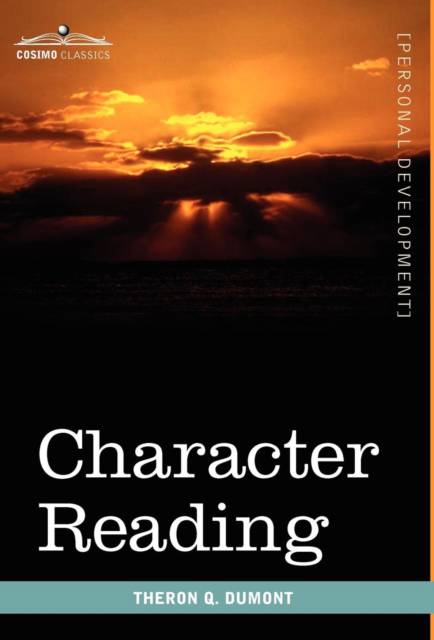
- Afhalen na 1 uur in een winkel met voorraad
- Gratis thuislevering in België vanaf € 30
- Ruim aanbod met 7 miljoen producten
- Afhalen na 1 uur in een winkel met voorraad
- Gratis thuislevering in België vanaf € 30
- Ruim aanbod met 7 miljoen producten
Zoeken
Omschrijving
Does character determine appearance? Can the shape of a person's face-or the bumps on his head-provide insight into intelligence and personality? What effect, ultimately, do our thoughts and attitudes and personality have on how we look? It's a question that artists and scientists (and dictators) have grappled with for ages, and one that can lead down increasingly slippery slopes. But in pre-Freudian, pre-Holocaust America, when phrenology was still semi-respectable, New Thought pioneer William Walker Atkinson (writing as Theron Q. Dumont) wrote what he hoped would be the ultimate guide to the Science of Character Reading. Today some of his findings must be taken with a grain of salt, but this 1919 guide is a fascinating catalogue-replete with drawings and diagrams-of the many temperaments, characteristics, faces and expressions of that remarkably complex species known as the human race. THERON Q. DUMONT is an alias and pen name of American writer WILLIAM WALKER ATKINSON (1862-1932), editor of the popular magazine New Thought from 1901 to 1905, and editor of the journal Advanced Thought from 1916 to 1919. He authored dozens of New Thought books under numerous pseudonyms, including "Yogi," some of which are likely still unknown today.
Specificaties
Betrokkenen
- Auteur(s):
- Uitgeverij:
Inhoud
- Aantal bladzijden:
- 228
- Taal:
- Engels
Eigenschappen
- Productcode (EAN):
- 9781616403249
- Verschijningsdatum:
- 1/07/2010
- Uitvoering:
- Hardcover
- Formaat:
- Genaaid
- Afmetingen:
- 140 mm x 216 mm
- Gewicht:
- 426 g

Alleen bij Standaard Boekhandel
+ 78 punten op je klantenkaart van Standaard Boekhandel
Beoordelingen
We publiceren alleen reviews die voldoen aan de voorwaarden voor reviews. Bekijk onze voorwaarden voor reviews.











